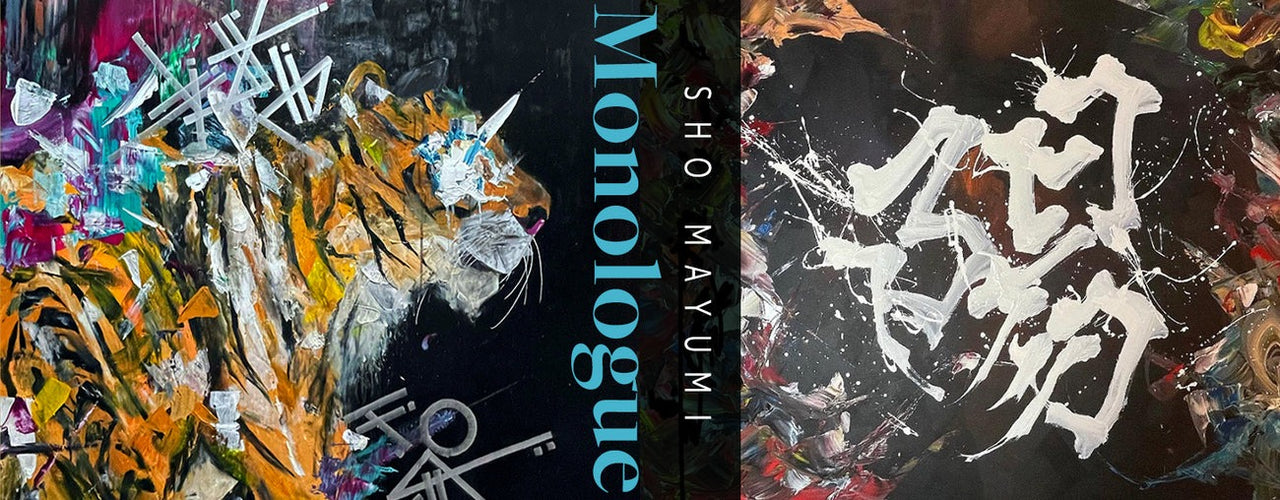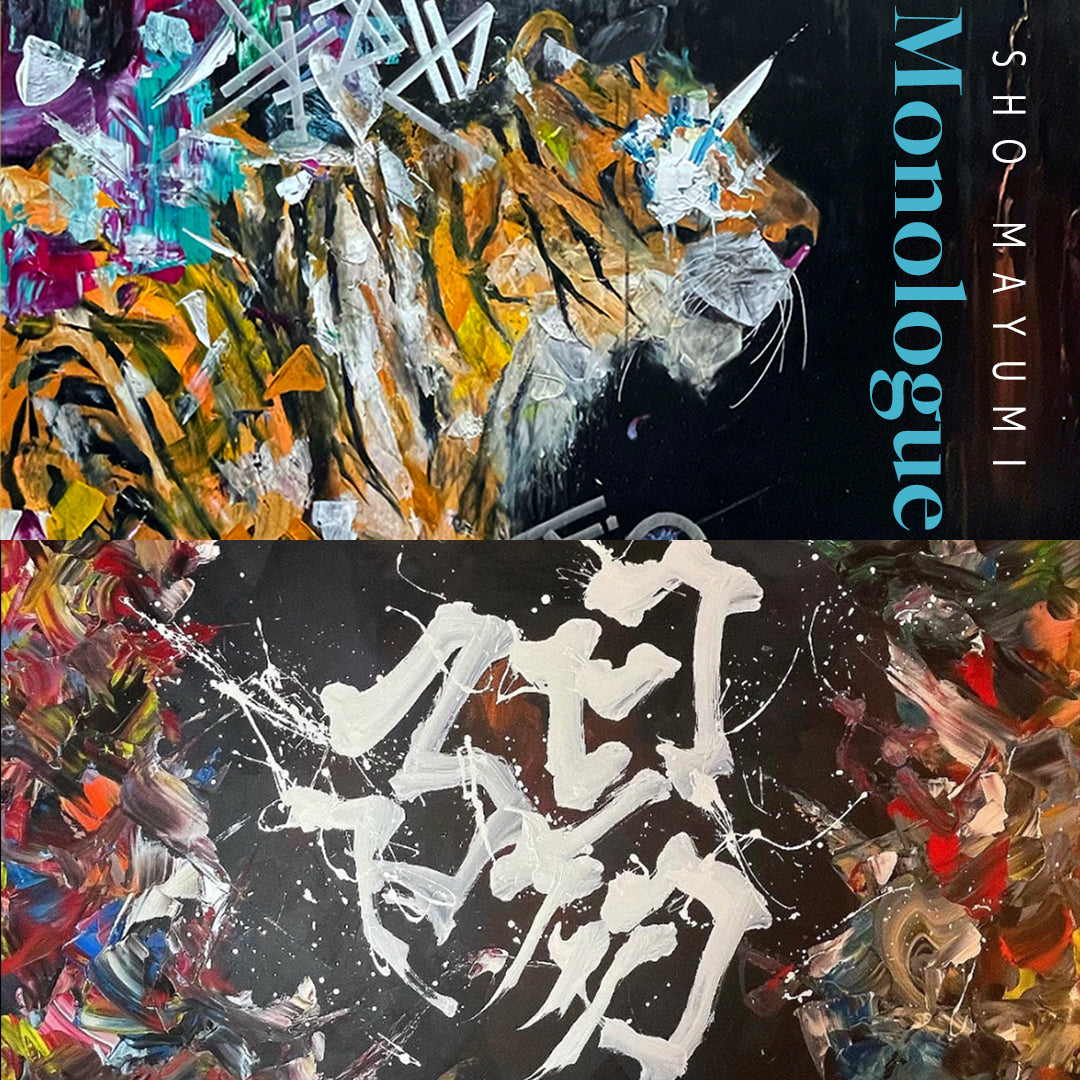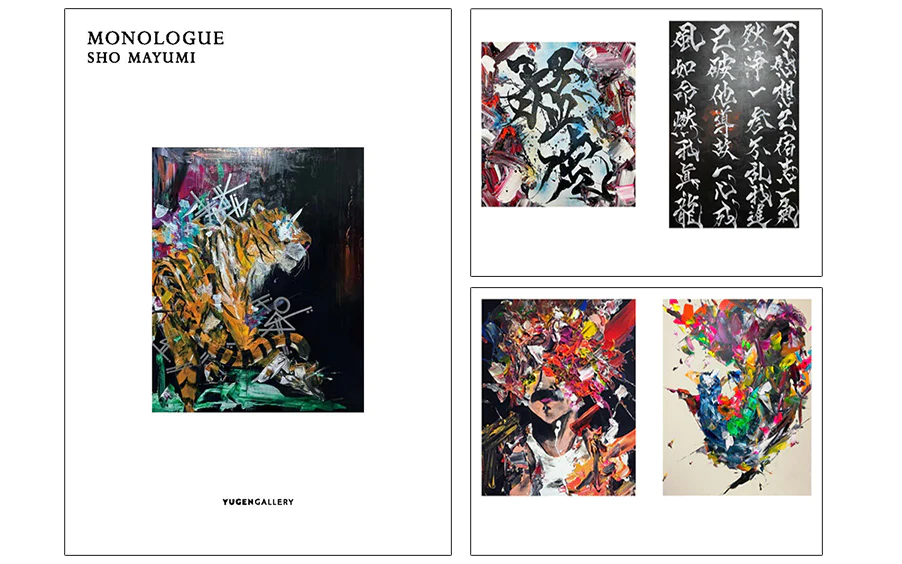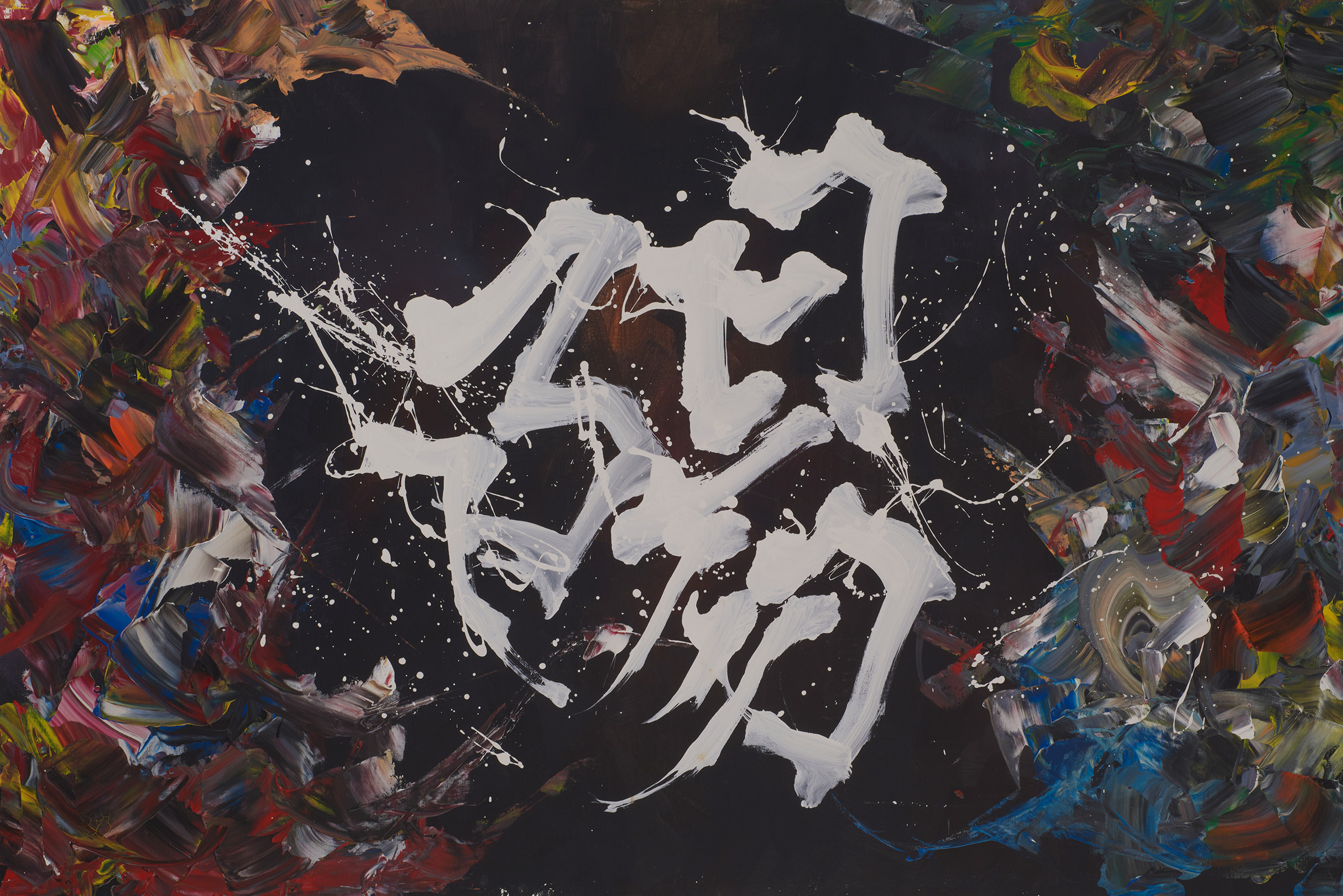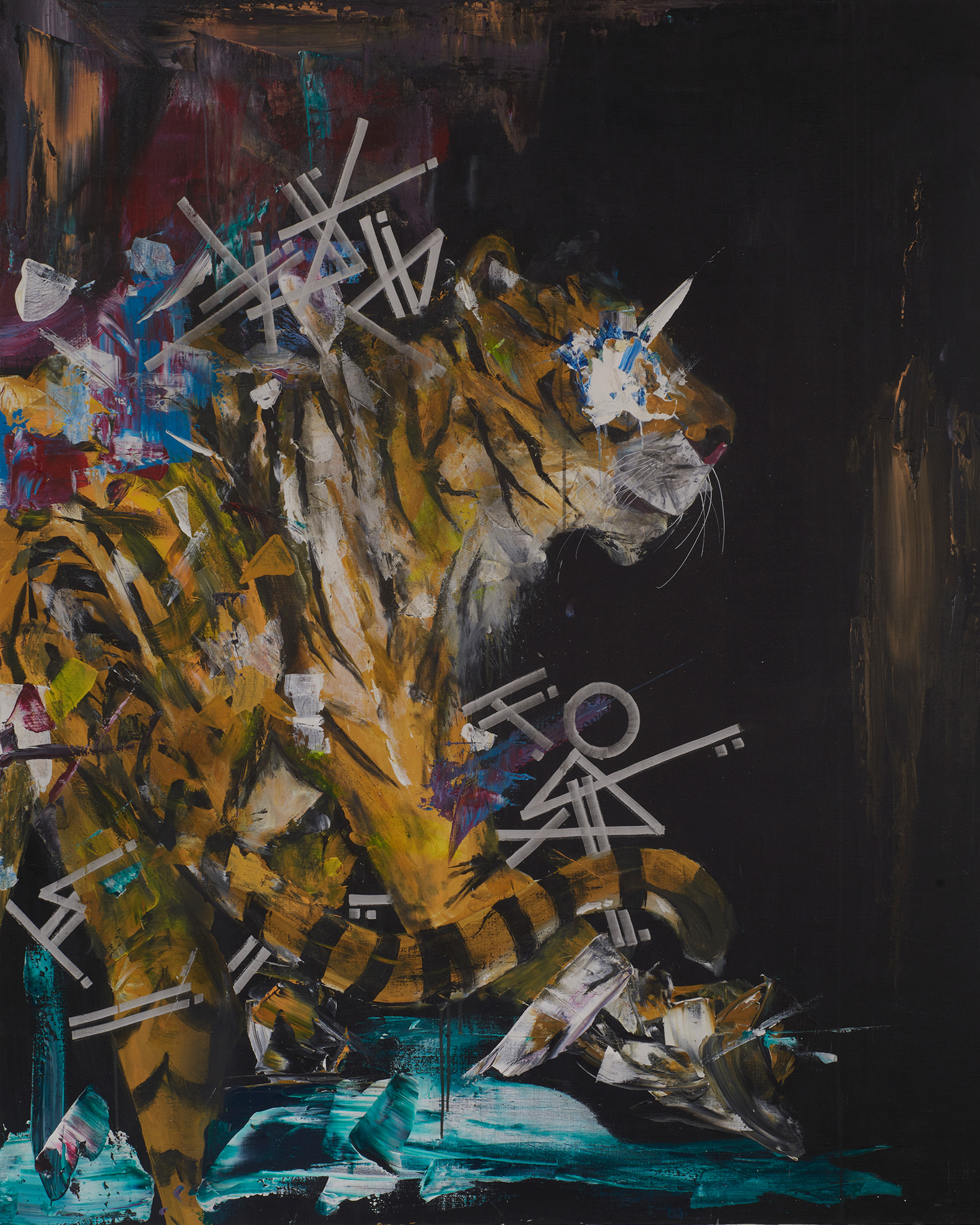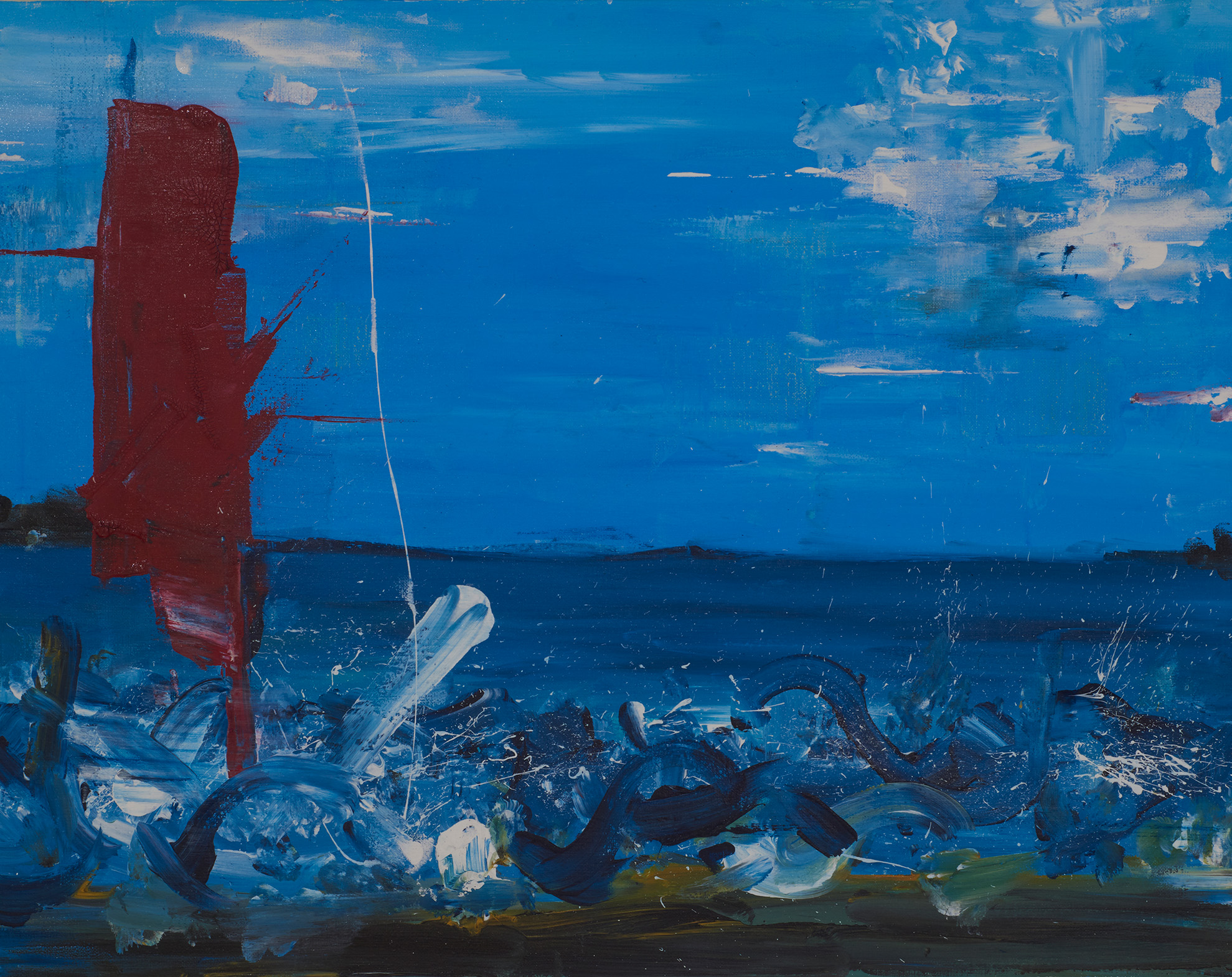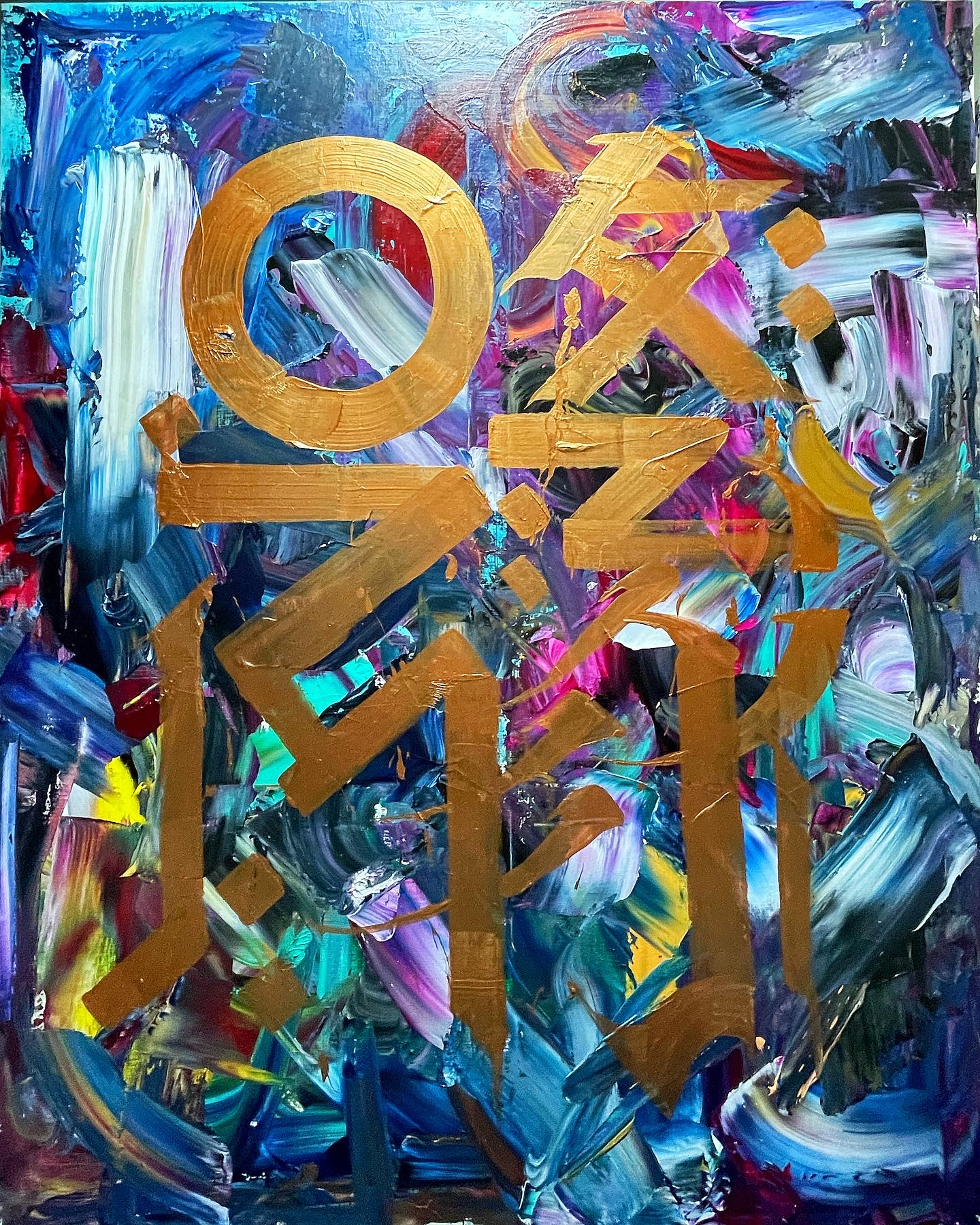Depicting the life that seeps out from letters
The theme of Mayumi's artistic activities is "exuding life." "Characters have evolved together with humans. The history of characters is the history of humans, and life itself. Even a single character has blood flowing through it." All living things have colors and sounds such as blood and heartbeats, and these also exude from the characters that humans have developed. Mayumi visualizes the inherent radiance of life.
"Letters are like a mirror of myself, to the extent that my feelings are reflected in the blurring of the lines. I only write the word "frustrated" when I'm truly frustrated." He says that the letters emerge from the emotions he feels when he smells and feels the texture, and sees with the eyes of a boy. In that sense, the work is complete before he writes it.
The emotions she felt became words, and in order to express the colors that emerged, she arrived at the technique of painting on canvas using not only ink but also acrylic paint. The thickly applied colors become blood and flesh, awakening the power to move forward and the power that lies dormant within each of the viewers. There you can sense the principle of life that Mayumi says is "freed from the concept of a medium of information."
Mayumi's calligraphy, which is based on his keen physical senses, is influenced by his own sports experience. Mayumi, who played baseball at Seiryo High School in Ishikawa Prefecture, one of the nation's leading high school baseball teams, says, "High school baseball in particular tends to be glamorized, but behind that is a mixture of the murky aspects of human nature that can never be neatly dismissed." Through the sport of baseball, Mayumi learned that what is truly beautiful is down-to-earth, and this determined his approach to art.
Calligraphy as a daily human activity
Various characters once existed in the world. Just like the evolution of living things, some of them disappeared, while others survived by changing their form, until the present day. Among them, kanji has been used continuously for over 3,500 years, with some changes in the shape of the characters, and although it has tens of thousands of characters, it can be read and written both vertically and horizontally. While languages can generally only be written vertically or horizontally, kanji is a rare form of writing even in the world.
The "harmony of function and beauty" that conveys knowledge and wisdom, and the beauty that can be found in the appearance of the characters themselves. It is clear that Chinese characters have had a great cultural influence. This is nothing other than the daily activities of humans who transcribe, transmit, and seek beauty in them.
Although Mayumi prides herself on being an outsider to calligraphy, she sees human activities and life in characters, and seems to be searching for the essence of calligraphy. "Characters connect with the heart and synchronize with emotions. Although the methods are different, such as expressing light and shade through brush strokes, the influence of calligraphy as the axis of expression is undoubtedly great," she explains.
In light of signs of a faltering democracy, expectations have been growing in recent years for anarchism, which rejects things that bind us, such as authority and social conventions, and finds hope through communicating with and working together with others.
Mayumi's calligraphy, which has a frivolous identity as a calligrapher and picks up values that have fallen through the cracks of larger social frameworks, can be seen as a form of "reception" that attends to voices that cannot be put into words, rather than a form of "transmission" that pushes people towards it. It can also be seen as an anarchism that offers an alternative perspective to the current state of dialogue and communities that seem to connect but are only becoming more and more divided, and finds hope.
By listening carefully to the voice of her heart, Mayumi sees the seeds of hope sprout.
Artist Statement
The title of this exhibition is "Monologue."
People and animals living today, all things interwoven with life and death, submission, opposition, and prosperity. Listen to the voiceless voices buried in the history of conflict that has been told as if it were the main story of humanity. They may be a kind of sympathy. Or perhaps they are cries of joy, or screams from the soul. Their eyes, trying to convey the voices that resonate in their hearts, are so empty that they are bound to the present and motionless. Is it a microcosm of the 5 million years that humanity once walked? Or is it a microcosm of modern humanity that no longer looks up to the sky? We want you to feel a variety of things through the monologue in your heart.
- Masaru Mayumi
